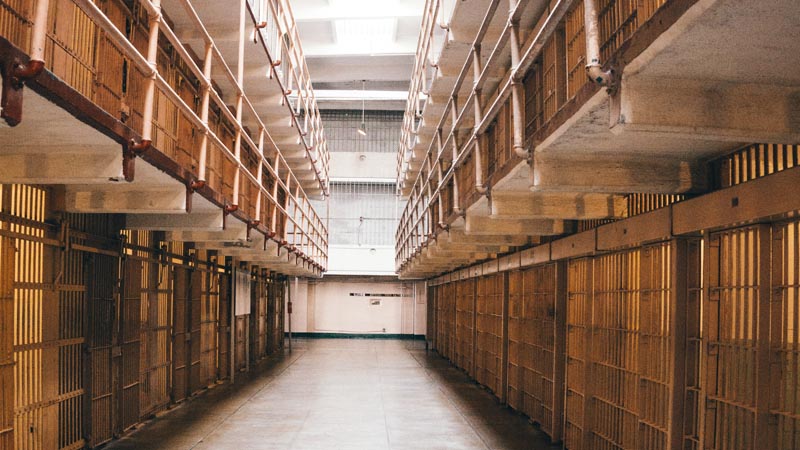Real Talk: My patient is a prisoner
MDlinx Dec 03, 2022
Caring for prisoners in a correctional facility can be a challenging—but ultimately educational and rewarding—experience.

During my 3rd year of medical school, I did an away rotation in adolescent medicine. I spent 3 months in Chicago working at the Cook County Juvenile Detention Center, where I did patient histories and physical exams upon intake. I also saw inmates in the ER at Cook County Hospital.
Although I only spent a short amount of time there, I learned that these patients were just like everyone else: They were human.
Patient characteristics
Many of the prisoners were funny, insightful, kind, and intelligent, and expressed gratitude for my taking the time to see them. I often felt sympathy for them, as many were dealt a bad stack of cards in life—they often were raised in an environment where criminal activity was the norm.
But some patients were manipulative and angry. I remember one young man who broke his arm after banging it against a metal wall. After being treated, he continued to engage in acts of self-harm by trying to tear off the cast and further injure his arm because he desperately wanted attention.
Many of these individuals were damaged at a very young age. I wondered, “Is this a life that anyone would choose if they had not experienced life-altering pain?”
Often these patients had never seen a healthcare professional (HCP) or had health insurance. It was common to see long-standing conditions such as diabetes, infectious diseases such as HIV, mental health issues, and substance use disorders in the same patient.
This rotation as a medical student was not only career-changing but life-changing, as it gave me a tiny glimpse into a part of society that many HCPs do not get to experience.
Separating legal and medical issues
One of the most important aspects of providing care in a correctional facility is keeping in mind that physicians are not part of the criminal justice system.
We do not know why a patient is in the correctional facility unless we ask them, and I found that their answer may likely be a biased, one-sided story. The facility will not provide that information. The judicial system decides the legal fate of the patient; it’s not our job to intervene regarding the legal consequences.
Regardless of the patient’s history or our opinions on the legal consequences, interactions with the patient, or their demeanor, it’s our job to provide inclusive, fair, appropriate care to every incarcerated patient we encounter.
For example, if one of these patients is in pain, they have the same right to appropriate pain management as anyone else in society. The fact that they were found guilty of a crime does not mean they have to live with pain as a consequence.
Very few prison patients reside in correctional facilities for the rest of their lives.
Despite their history, individuals in correctional facilities are an integral part of our society, but unfortunately, many of us have misconceptions that they are permanent residents of these facilities.
This is typically untrue. They can be released and become our neighbors, the people in line at the grocery store, and community workers—or even our patients.
When dealing with an incarcerated patient whose past behavior challenges our ethical beliefs, the quality of care we provide should not be reflective of what we feel the patient ‘deserves.’ It should be reflective of us.
We must provide our best care to the patient and ensure that they are responding to it.
Physician and patient safety
Physicians may wonder whether it’s safe to work in a correctional facility. In my experience, the answer is yes.
In my time working in a correctional facility, I did not have a guard in the room unless I requested one, and that is the norm. My attending physician wanted the patients to feel safe and to be able to open up to their HCP; having a guard could be a deterrent for this.
From what I observed, most of these patients were not aggressive or dangerous toward their physician. However, if we ever felt unsafe or wanted a guard in the room, that option was always available.
HCPs in correctional facilities typically carry panic buttons to push in an emergency, which immediately signals a team of security guards to rush in.
When working with what are considered “difficult” patients—those in the highest security or segregation units—physicians may choose to have a guard with them. These patients may act out for many different reasons, including underlying psychosis, malingering, attention-seeking, or anger and aggression.
Like at any outpatient, hospital, or emergency setting, we must always ensure the safety of our patients and ourselves. A prison environment is no different.
Each week in our "Real Talk" series, mental health advocate Kristen Fuller, MD, shares straight talk about situations that affect the mental and emotional health of today's healthcare providers. Each column offers key insights to help you navigate these challenging experiences. We invite you to submit a topic you'd like to see covered.
-
Exclusive Write-ups & Webinars by KOLs
-
Daily Quiz by specialty
-
Paid Market Research Surveys
-
Case discussions, News & Journals' summaries